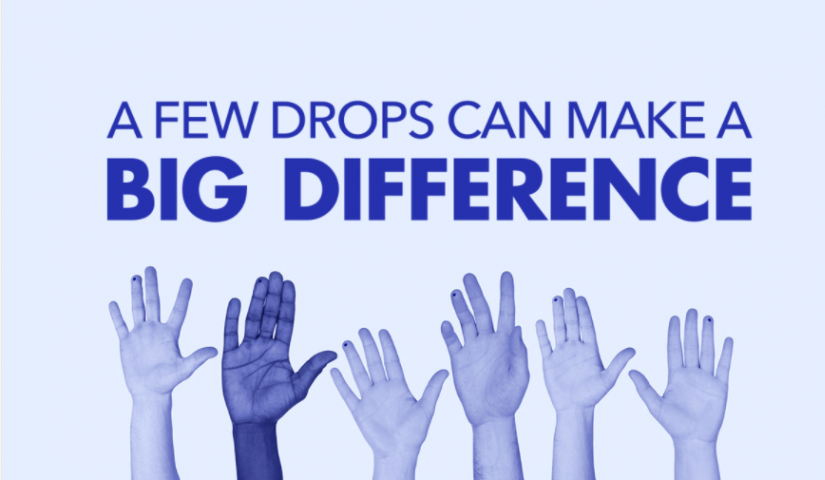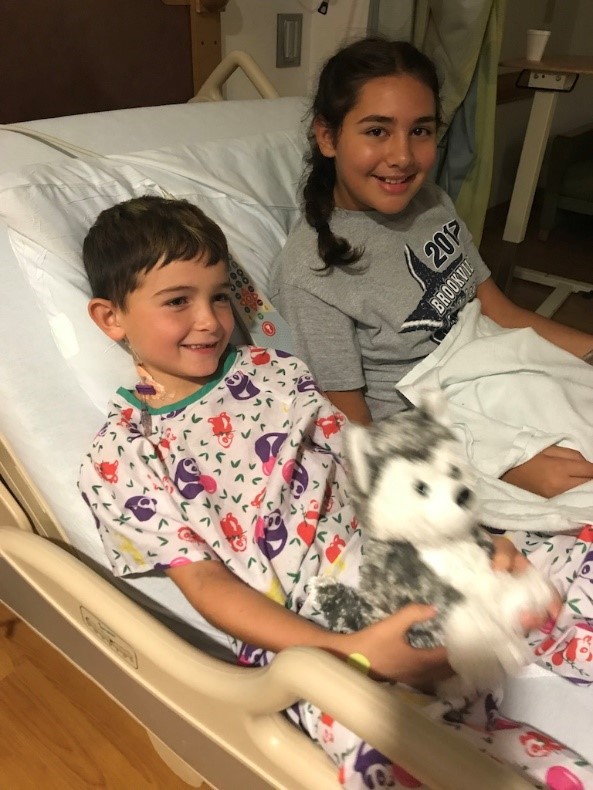
What difference can a few drops of blood make? Part 1 - Meet Emily Goff
When you take part in TrialNet type 1 diabetes (T1D) risk screening, a few drops of blood can make a big difference. In addition to learning your risk for developing T1D—often years before symptoms appear—you’re joining the TrialNet #T1Dfamily, the world’s largest clinical trial network ever assembled to change the course of T1D.
Meet Emily Goff as she begins her journey on TrialNet's Pathway to Prevention

If you’ve already been screened for T1D risk—or are thinking about it—you may wonder what exactly happens next.
Over the next 4 weeks, join us as we share Emily Goff’s personal journey on the TrialNet Pathway to Prevention. You’ll learn about how blood samples are tested, what happens when results show an increased risk for T1D, what it looks like to join a prevention study, and how our research teams walk alongside you every step of the way.
Emily Goff, 37, is an artist who lives with her 12-year-old son Luka in a suburb of Pittsburgh, PA. Nearly 4 years ago, Luka was diagnosed with T1D at Children’s Hospital of Pittsburgh. He was 8 years old and in diabetic ketoacidosis (DKA), a serious and potentially life-threatening condition.
“Luka was in really bad shape and quickly spiraling downward,” recalls Emily. “He’d been losing weight and getting super cranky, but I assumed it was a growth spurt since he was constantly hungry and had previously eaten like a bird.”
“Then about 2 days before his diagnosis, he got incredibly lethargic and flushed. The day before, he was even more lethargic and stopped eating. I thought he had the flu.”
“Luka was in really bad shape and quickly spiraling downward,” recalls Emily. “He’d been losing weight and getting super cranky, but I assumed it was a growth spurt since he was constantly hungry and had previously eaten like a bird.”
“That night he started screaming that his stomach hurt and was projectile vomiting. I took him to the ER [Emergency Room], but after waiting several hours he stopped vomiting. The nurse at check-in said it would still be a wait before being seen, so we went back home.”
“It got worse overnight—more screaming, more vomiting—and he got more and more lethargic. By 7 a.m. he was not himself at all, so I took him to a different, closer ER. By then, I thought it was appendicitis because of the pain in his stomach. He was screaming for water and glassy-eyed. That’s when we learned he was in DKA [diabetes ketoacidosis], and he was transported by ambulance to Children's Hospital. It was a horrifying experience.”
“The next day, I was in Luka’s hospital room posting on Facebook about the symptoms we had missed. My cousin saw my post and recognized her daughter had been having some of the same symptoms. She sprang into action, calling the school nurse to ask her to check her daughter’s blood sugar level.”

“Once my cousin had her daughter’s blood sugar level, she called their pediatrician who had them go straight to the hospital. Thankfully, they were able to catch it before it progressed to DKA. She and Luka were diagnosed 2 days apart and just down the hall from each other in the hospital. We have no family history of T1D, so this was new and shocking for all of us.”
“David, a study coordinator with TrialNet, came to our hospital room and told us about risk screening for family members,” Emily explains. “He told us that a TrialNet blood test can identify personal risk for type 1 diabetes years before symptoms appear. My reaction was the more knowledge, the better. I was tested right there on the spot! It was quick and easy. I’m an artist but science is super neat.”
Hearing about TrialNet and being tested is where Emily’s story really begins. To see what happens next, be sure to watch for part 2. Meanwhile, we invite you to share this story with your family and friends.
DID YOU KNOW:
What is Diabetic Ketoacidosis (DKA)?
A potentially life-threatening condition in people with T1D, DKA happens when there is a shortage of insulin. In response, the body begins to burn fat for energy, which produces ketones. When ketones build up in the blood, they make it more acidic, which can lead to symptoms and cause complications. Signs of DKA include vomiting, sleepiness, fruity smelling breath, difficulty breathing, confusion, and, if untreated, coma and death.
For people involved in T1D research like TrialNet, risk of diabetic ketoacidosis (DKA) at diagnosis drops from 30% to 3%. TrialNet also offers studies for people newly diagnosed. Learn more
How can a child's blood sugar be tested at school?
In most cases, school nurses would use a lancet, a finger stick device with a tiny needle that produces a droplet of blood. The droplet is placed on a test strip, which is entered into a meter that gives a blood sugar reading in seconds.
This is a part 1 of a 4-part series. If you subscribe to TrialNet's newsletter, you'll get a weekly email for the next 3 weeks. If someone forwarded this article to you, be sure to subscribe here.
A few drops can make a big difference!
TrialNet T1D risk screening looks for type 1 diabetes years before it appears. Know you or your child’s risk for T1D with a free blood test delivered to your door.
Sign Up
Answer a few questions. Free TrialNet screening kits are sent directly to you and can be done from the safety of your home.
Stick It
Each kit includes everything you need. All it take is a few drops using a finger-stick and provided collection tube.
Ship It
Send your samples back for free using FedEx contactless at home pick up. Get your results in 4-6 weeks.
The future without T1D begins with you!




